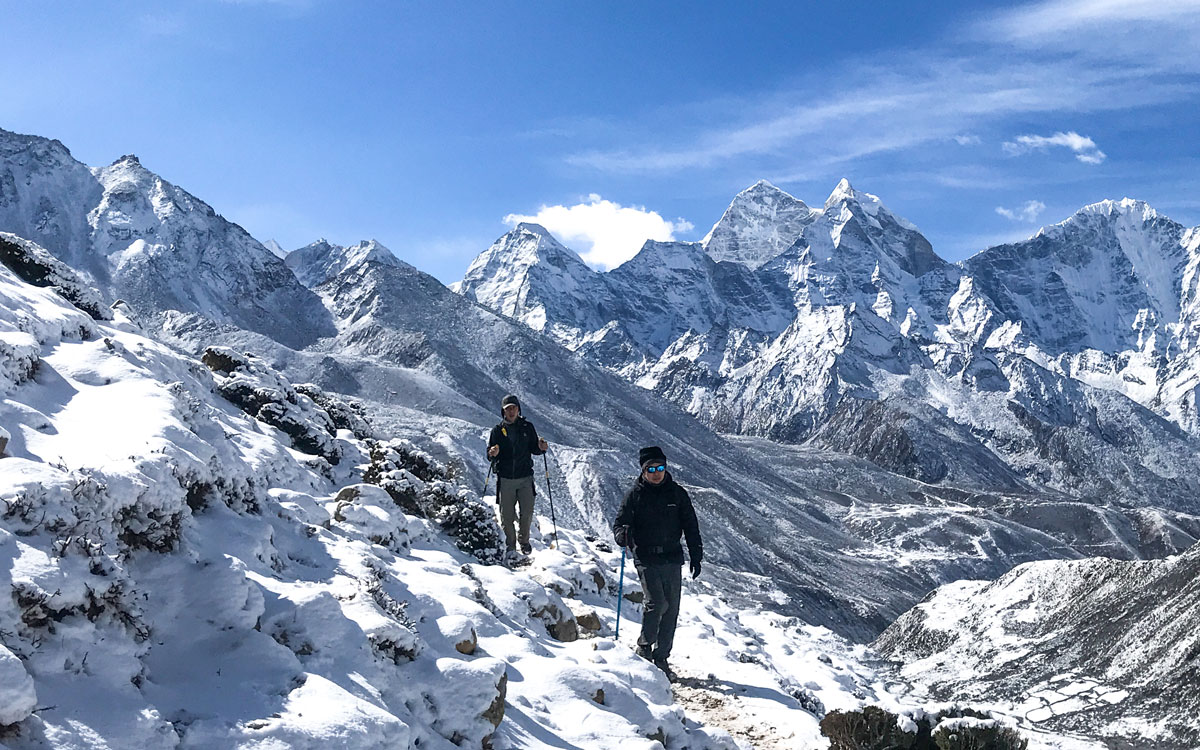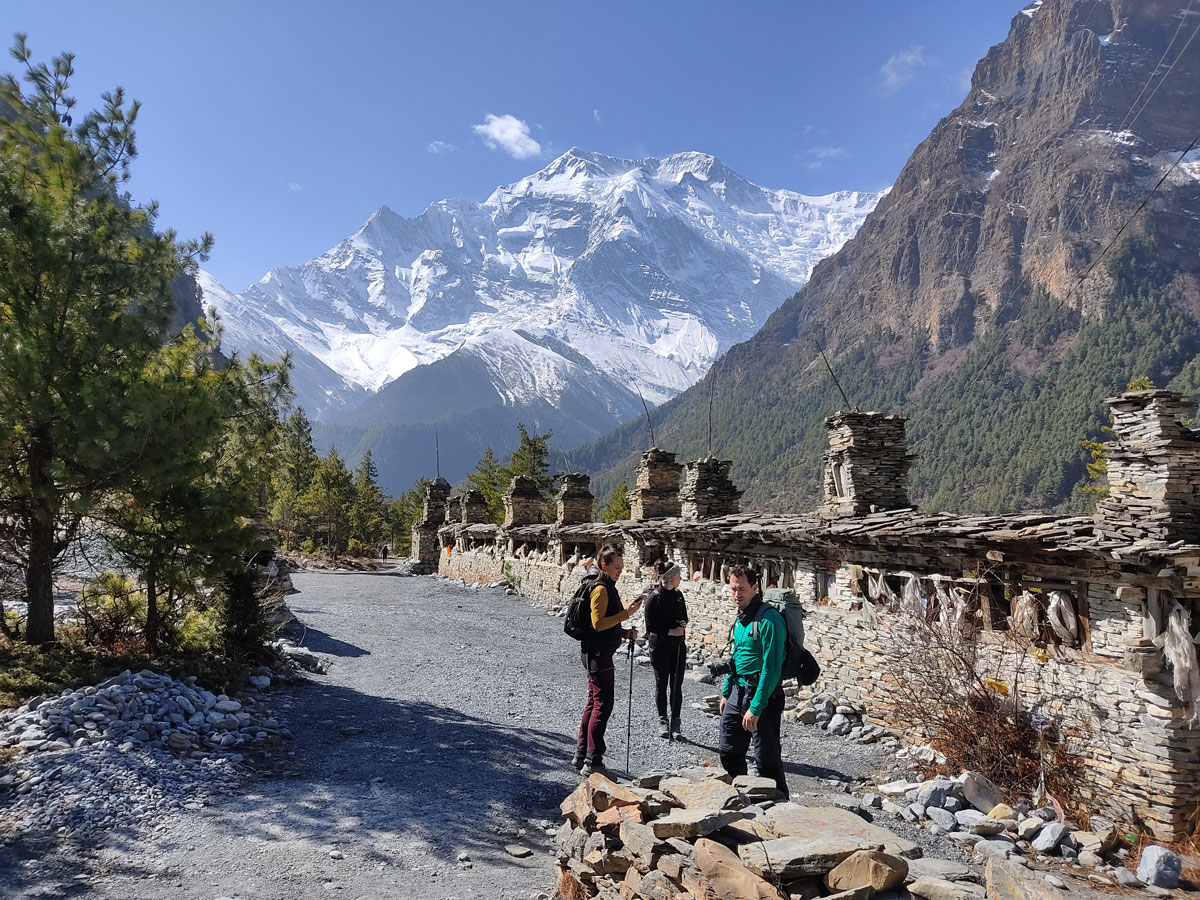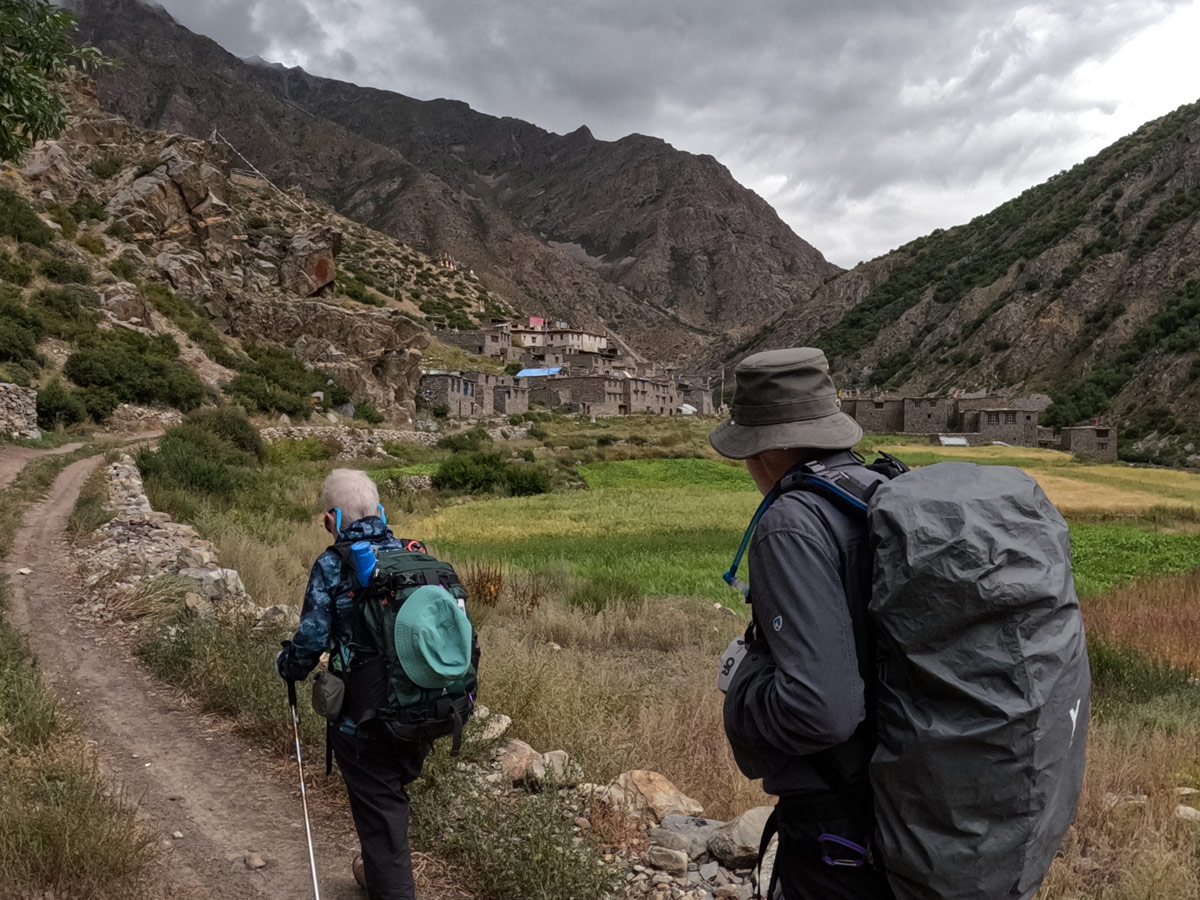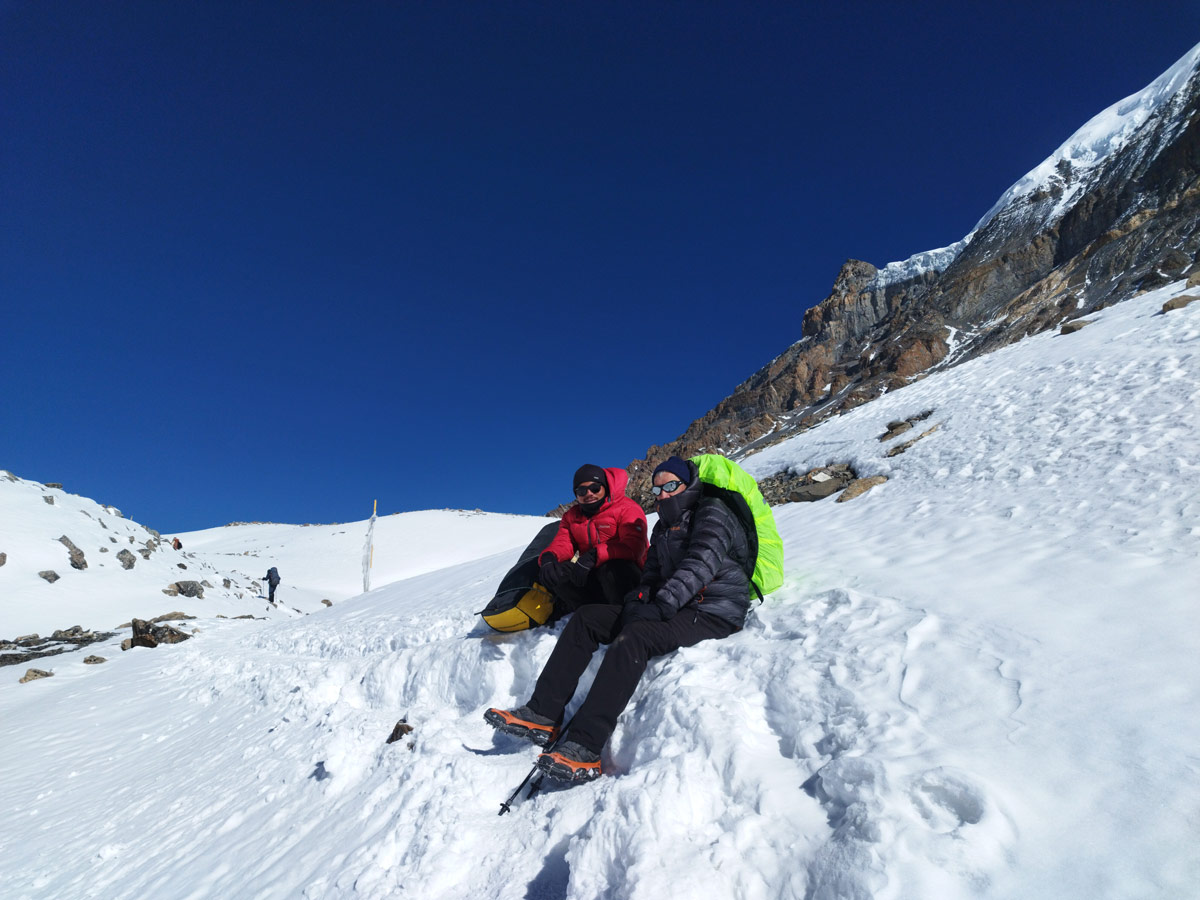Altitude sickness prevention is crucial for trekkers venturing into the high Himalayas of Nepal, where rugged and fluctuating terrains present challenges for hikers and adventurers from all over the world.
With its rugged and fluctuating terrains hikers and trekkers around the world have been one step behind their lifetime journey during trekking in Everest, Annapurna, Langtang, Manaslu, Upper Mustang, Kanchenjunga, Dhaulagiri, etc. trekking regions due to altitude sickness.
High altitude sickness is a severe problem where one can lose his/her life if left untreated. In addition, if adequate measures are not taken to prepare for high altitude sickness, it can negate all your time and effort invested pointlessly along with the depletion of physical energy and financial resources for your lifetime journey.
The purpose of this blog is to provide valuable information on the risks of high-altitude sickness, its symptoms, possible complications, and effective measures to minimize its impact while trekking in Nepal.
Altitude sickness, also referred to as “mountain sickness”, is a group of symptoms that strikes when ascending to an elevation ranging from 1,500 to 2,000 meters (4,921 to 6,562 feet) above sea level.
While climbing to higher altitudes, the barometric pressure decreases, leading to a reduction in the partial pressure of oxygen at every point. This reduction in oxygen can trigger altitude sickness.
Similarly, if we gain high altitude too quickly, we can experience oxygen deprivation, leading to altitude sickness. The 3 major forms of altitude sickness are:
Acute Mountain Sickness (AMS)
Acute Mountain Sickness is a severe condition caused by the combination of reduced oxygen and lower atmospheric pressure reacting with the body.
Symptoms of AMS may include nausea & vomiting, heavy head (dizziness), blocked ears, headache, fatigue, lack of appetite, sleeping problems (insomnia), discomfort, and rapid heartbeat.
High Altitude Cerebral Oedema (HACE)
High Altitude Cerebral Oedema is a severe medical condition in which your brain swells with fluid as a result of high-altitude exposure.
Symptoms of HACE may include a dry cough, nose bleeding, shortness of breath, higher temperatures (fever), chest tightness, rapid heart rates (palpitations), congestion, swelling, and fainting.
High Altitude Pulmonary Oedema (HAPE)
High Altitude Pulmonary Oedema is a non-cardiogenic form of pulmonary edema in which your lungs swell with fluid as a result of high altitude.
Symptoms of HAPE may include hallucinations, loss of consciousness, fever and fatigue, photophobia, hypertension, confusion, coma, shortness of breath, and difficulty walking.
It is crucial to address any of the above-mentioned symptoms promptly to prevent potentially severe consequences such as coma or death resulting from the delayed treatment of altitude sickness.
Therefore, let’s discuss some measures that can be taken to minimize the risk of High-altitude sickness, enabling you to enjoy your trip to the fullest without encountering any obstacles or negative consequences.
Altitude sickness prevention measures while trekking in Nepal
If you’re planning to go trekking in Nepal, it’s essential to understand the risks of altitude sickness and take necessary precautions to avoid its severe consequences.
In this section, we’ll discuss some effective strategies to minimize the risk of altitude sickness and help you make the most of your trekking journey in the high Himalayas.
Seek professional medical advice
Before embarking on your high-altitude trekking journey in Nepal, it’s essential to seek recommendations from medical professionals to ensure you are fully prepared for the challenges ahead.
This may involve getting a physical examination and discussing your medical history to assess your risk for altitude sickness. Your doctor may also prescribe medication or recommend supplements to help prevent or manage altitude sickness symptoms.
Avoid substance consumption
Consuming alcohol, tobacco, and depressant drugs can negatively affect your body’s ability to acclimatize, making you more susceptible to altitude sickness symptoms.
It’s best to avoid these substances altogether during your trek. Additionally, caffeine and diuretics can dehydrate you, so it’s best to consume them in moderation and increase your water intake accordingly.
Start Trekking at Lower Altitudes
If you’re trekking in Nepal, it’s likely that you’ll be starting at a lower altitude and gradually making your way up.
It’s important to start your journey at an altitude below 3,000 m/10,000 ft and allow for at least 24 hours to acclimatize before going any higher. This gives your body time to adjust to the lower oxygen levels and thinner air.
Follow safe altitude gain rules
When trekking in high-altitude environments, it’s crucial to follow the safe altitude gain rules. The general rule of thumb is to not gain more than 304 m/1,000 ft in altitude per day.
It’s also recommended to “climb high and sleep low,” meaning you should ascend during the day but sleep at a lower altitude. This gives your body ample time to adjust to the altitude changes.
Stay hydrated and maintain a balanced diet
Staying hydrated is crucial in high-altitude environments, so make sure to drink at least 3 to 4 quarts of water per day.
Additionally, maintaining a balanced diet that is rich in carbohydrates can help provide your body with the energy it needs to trek in high-altitude environments. Make sure to bring enough food and snacks to keep your energy levels up throughout your journey.
Gradually acclimatize your body
Acclimatizing your body gradually is essential when trekking in high-altitude environments. This involves gaining altitude slowly and taking regular breaks to hike for at least 3 to 4 hours per day.
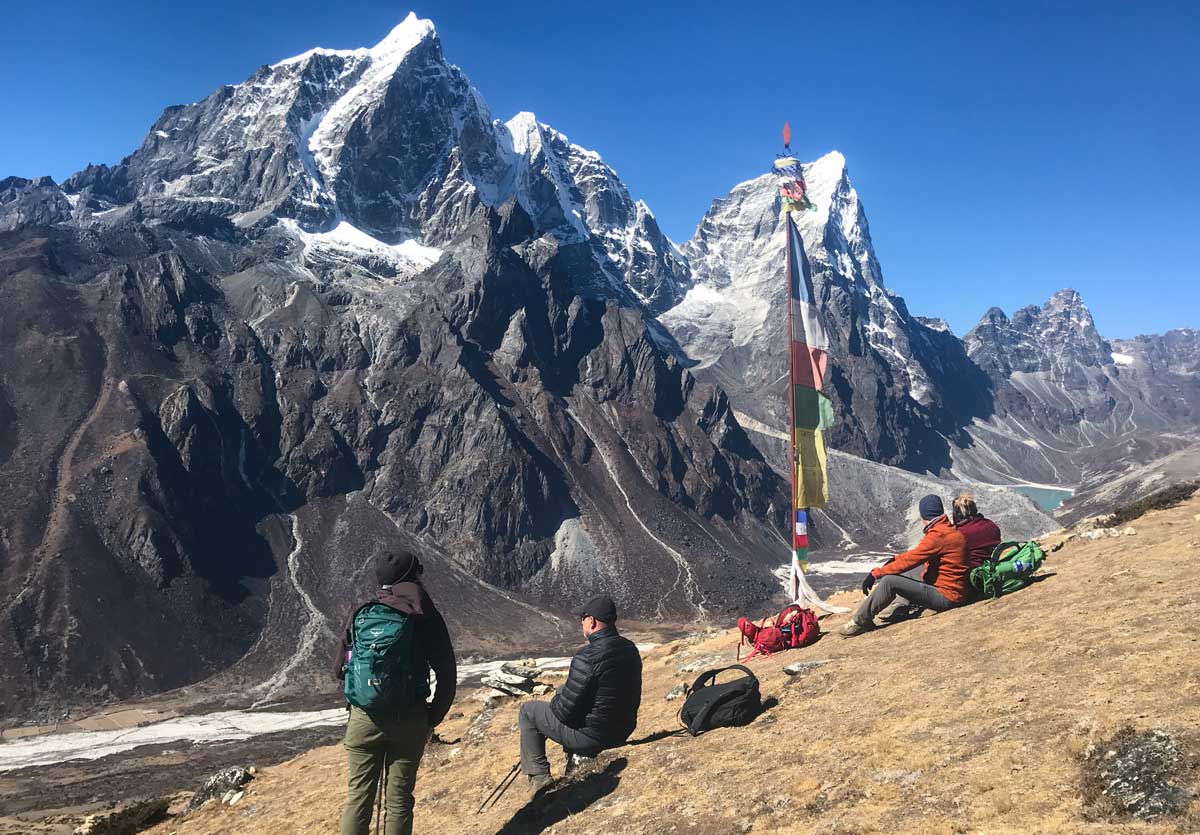
This allows your body to adjust to the changes in altitude and build up the necessary red blood cells to carry oxygen more efficiently.
Hire experienced guides
Hiring experienced guides when trekking in Nepal is highly recommended. They can provide invaluable knowledge about the terrain, weather, and altitude conditions, as well as assist you with navigation and logistics.
Additionally, they can monitor your health and provide guidance if you start experiencing any altitude sickness symptoms.
Respond to altitude sickness symptoms
It’s important to pay attention to your body and respond to any altitude sickness symptoms promptly. If you start experiencing symptoms such as nausea, dizziness, or shortness of breath, move to a lower altitude immediately to allow your body to recover. Resting for a day or two at a lower altitude can help alleviate these symptoms.
Carry first aid items
Carrying all necessary first aid items, including medication, is crucial when trekking in high-altitude environments.
It’s recommended to bring medication such as acetazolamide or dexamethasone to help prevent or manage altitude sickness symptoms. Additionally, make sure to bring a first aid kit with essentials such as bandages, antiseptics, and painkillers.
Test medications before use
Before taking any local medication, test your skin and consult with your guide and locals to ensure its safety and effectiveness in high-altitude environments. Remember, prevention is always better than cure
In conclusion, it is crucial to avoid using oxygen therapy or any medications for altitude sickness as a means to continue your ascent once the symptoms have set in.
The guidance provided above has been curated after discussions with experienced guides and is aimed at helping you prepare yourself and your body to mitigate the risks of altitude sickness.
Also, remember to always consult with experienced guides, stay hydrated, acclimatize gradually, and never ignore any symptoms of altitude sickness.
With these measures in place, you can enjoy your journey to the fullest without putting your life at risk. Stay safe and enjoy the breathtaking beauty of high-altitude destinations in Nepal.
